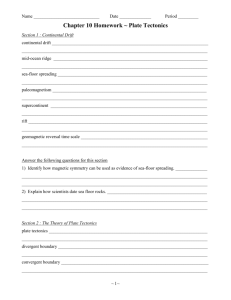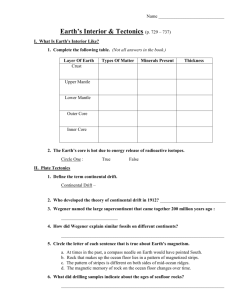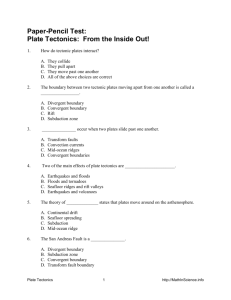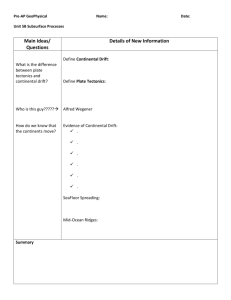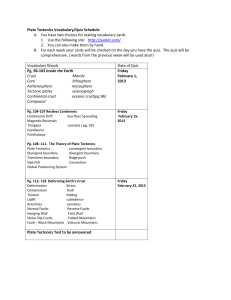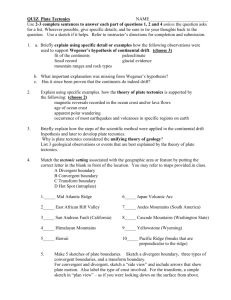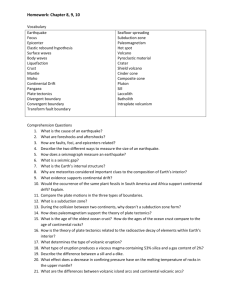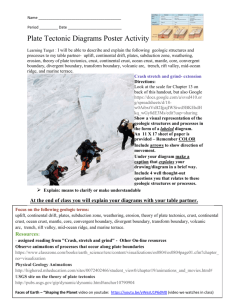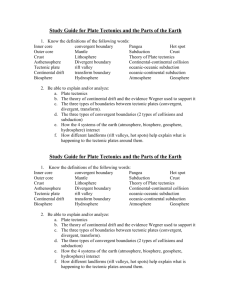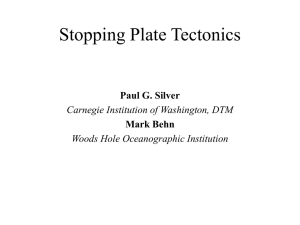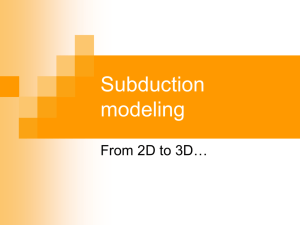Name - SchoolRack
advertisement
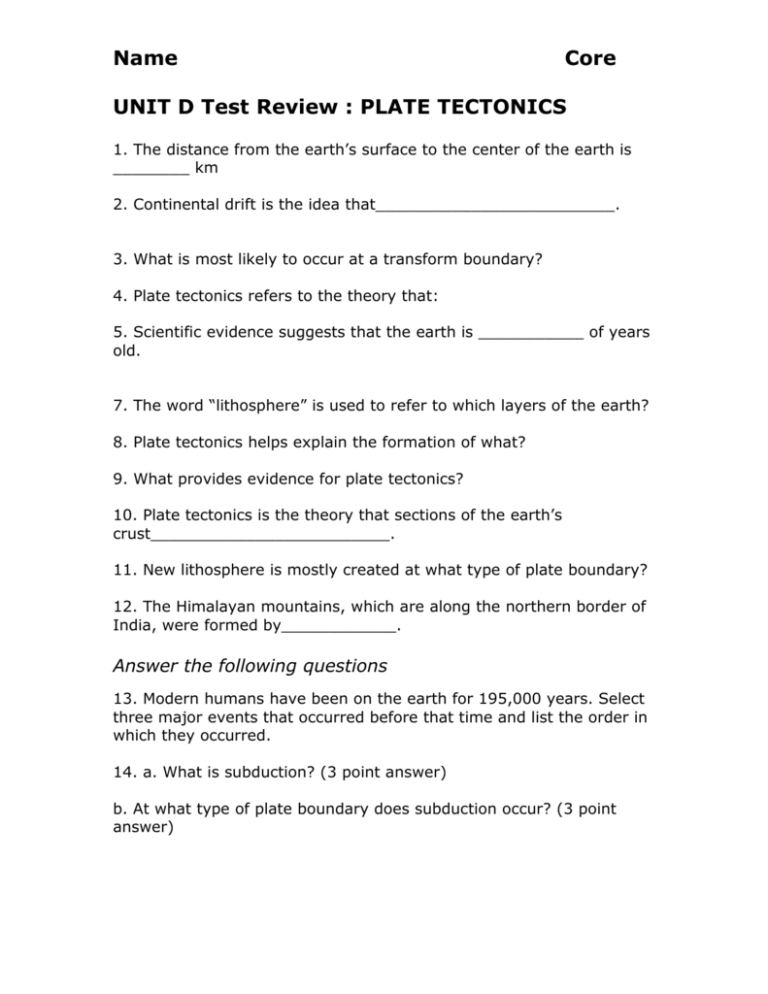
Name Core UNIT D Test Review : PLATE TECTONICS 1. The distance from the earth’s surface to the center of the earth is ________ km 2. Continental drift is the idea that_________________________. 3. What is most likely to occur at a transform boundary? 4. Plate tectonics refers to the theory that: 5. Scientific evidence suggests that the earth is ___________ of years old. 7. The word “lithosphere” is used to refer to which layers of the earth? 8. Plate tectonics helps explain the formation of what? 9. What provides evidence for plate tectonics? 10. Plate tectonics is the theory that sections of the earth’s crust_________________________. 11. New lithosphere is mostly created at what type of plate boundary? 12. The Himalayan mountains, which are along the northern border of India, were formed by____________. Answer the following questions 13. Modern humans have been on the earth for 195,000 years. Select three major events that occurred before that time and list the order in which they occurred. 14. a. What is subduction? (3 point answer) b. At what type of plate boundary does subduction occur? (3 point answer) c. Do you think nuclear waste should be stored in a subduction zone? Support your answer with at least two pieces of evidence. (3 pt answer) 15. Draw a circle and use it to make a diagram of the earth’s interior by: (4 points) a. Sketching the approximate size of each layer b. Labeling each layer with its name Essay Question ( 16 points) 16 What is the Richter scale and what does it have to do with a seismograph? Vocabulary: Study Your Flippy-Flappy and know the definitions of the words below Active Dormant Extinct Nuclear Waste Magma Core Crust Lava Lithosphere Mantle Paleontologist Geological Time Pangea Plates Continental Drift Plate tectonics Theory Convergent boundary Divergent boundary Subduction zone Transform boundary Convection Current Seismograph Richter scale


